Many thanks to SWLing Post contributor, Jock Elliott, who shares the following guest post:
It’s about time . . . and beacons
By Jock Elliott, KB2GOM
Shortwave time stations can be incredibly useful for shortwave listeners, not just for checking the time, but also for finding out what’s going on with radio signal propagation. What makes these stations particularly valuable is that they are available all the time. I use them often when I am testing radio equipment or tweaks to my listening post.
The National Institute of Standards and Technology (part of the U.S. Department of Commerce) maintains a couple of stations devoted to broadcasting time announcements, standard time intervals, standard frequencies, UT1 time corrections, a BCD time code, and geophysical alerts 24 hours a day, 7 days a week.
WWV in Fort Collins, Colorado, according to NIST:
“radiates 10 000 W on 5 MHz, 10 MHz, and 15 MHz; and 2500 W on 2.5 MHz and 20 MHz. Each frequency is broadcast from a separate transmitter. Although each frequency carries the same information, multiple frequencies are used because the quality of HF reception depends on many factors such as location, time of year, time of day, the frequency being used, and atmospheric and ionospheric propagation conditions. The variety of frequencies makes it likely that at least one frequency will be usable at all times.”
In addition, WWV broadcasts the same signal heard on the other WWV frequencies on 25 MHz on an experimental basis. The power is 2500 W and, as an experimental broadcast, is may be interrupted or suspended without notice.
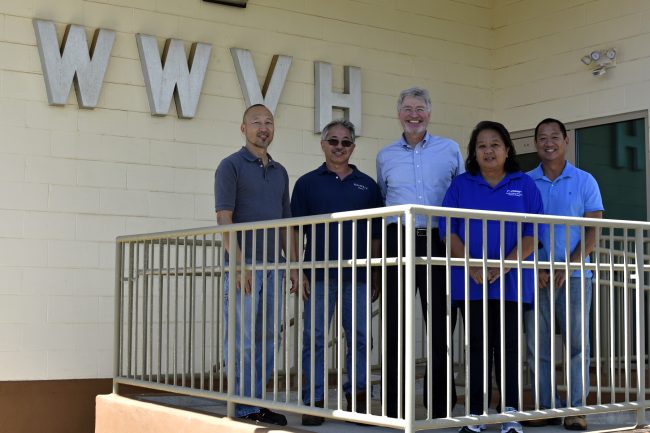
WWVH crew from left to right: Dean Takamatsu, Dean Okayama, Director Copan, Adela Mae Ochinang and Chris Fujita. Credit: D. Okayama/NIST
WWVH, based in Kekaha, Hawaii, transmits 10000 W on 10 MHz and 15 MHz, and 5000 W on 2.5 MHz. A NIST notes that the 5 MHz broadcast, which normally radiates 10 000 W, is currently operating at 5000 W due to equipment failure.
Both stations have voice announcements. WWV uses a male voice; WWVH, a female voice. They are staggered in time so that they don’t talk over each other. While doing research for this blog, one afternoon on 5 MHz and 10 MHz, I could hear the female voice, followed by the male voice, so I was hearing both Hawaii and Colorado. On 15 MHz, I could hear only Hawaii. Both stations transmit in AM mode, although I sometimes use upper sideband to pick the signals out of the noise.
In addition, there is a Canadian time station. CHU transmits 3000 W signals on 3.33 and 14.67 MHz, and a 5000 W signal on 7.85 MHz.
The frequencies were chosen to avoid interference from WWV and WWVH. The signal is AM mode, with the lower sideband suppressed.
The same information is carried on all three frequencies simultaneously including announcements every minute, alternating between English and French. The CHU transmitters are located near Barrhaven, Ontario.
According to a posting on Radio Reference, there is also a time beacon in Moscow, Russia that transmits on 9996 and 14996 kHz in CW mode. I have never heard that station.
If anyone knows of additional shortwave time stations, please post the information in the comments section below.
Beacons
Another “standard reference” that can be used to figure out what’s happening with shortwave propagation is the International Beacons Project, a worldwide network of radio propagation beacons. It consists of 18 Morse code (CW) beacons operating on five designated frequencies in the high frequency band. The project is coordinated by the Northern California DX Foundation (NCDXF) and the International Amateur Radio Union (IARU).
This page shows the locations of the beacons and gives samples of the signals that can be heard. Each beacon transmits once on each band once every three minutes, 24 hours a day. A transmission consists of the callsign of the beacon sent at 22 words per minute followed by four one-second dashes. The callsign and the first dash are sent at 100 watts. The remaining dashes are sent at 10 watts, 1 watt and 100 milliwatts. At the end of each 10 second transmission, the beacon steps to the next higher band and the next beacon in the sequence begins transmitting.
Clicking around the International Beacons Project website will reveal a wealth of information, including a Reverse Beacon Network — https://www.ncdxf.org/beacon/RBN.html — no kidding.
Finally, if you would like to disappear down the rabbit hole of chasing shortwave beacons, here is a list of 411 beacons around the world: http://www.dl8wx.de/BAKE_KW.HTM
The listing includes the frequency, the location, and the power of the transmitter (among other things). If any reader has experience with these beacons, please post in the comments section.

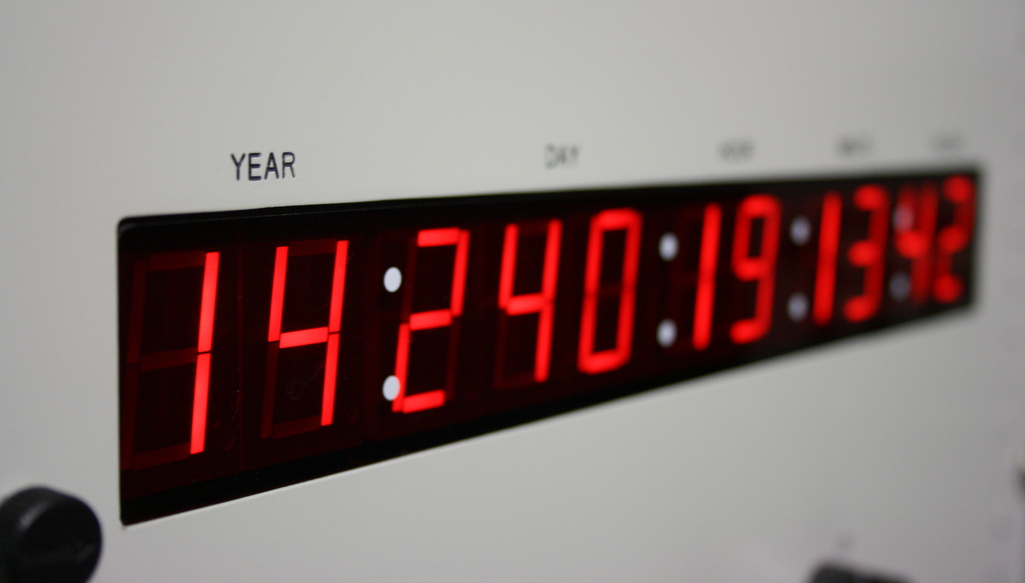
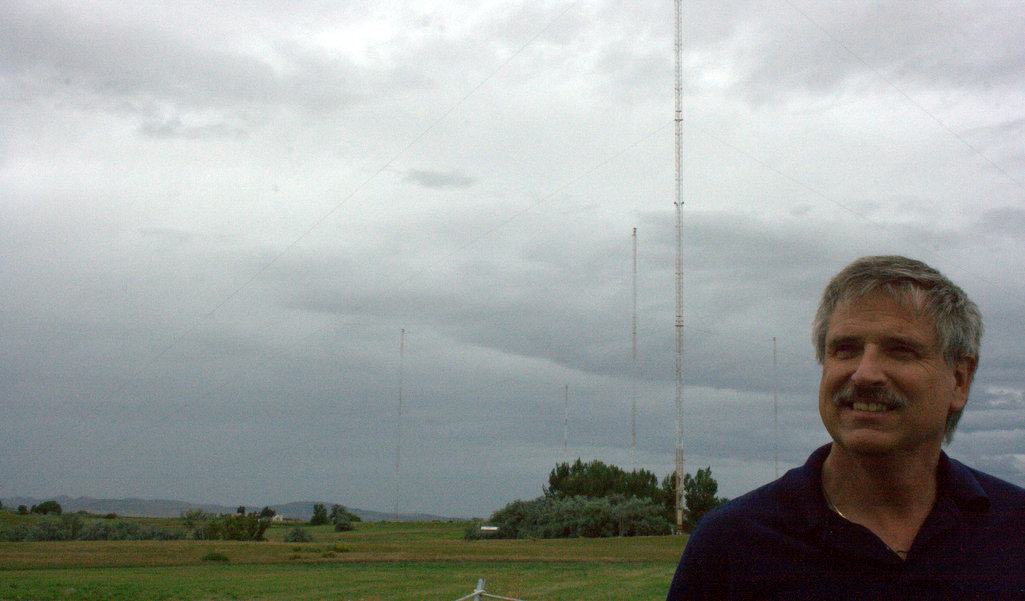
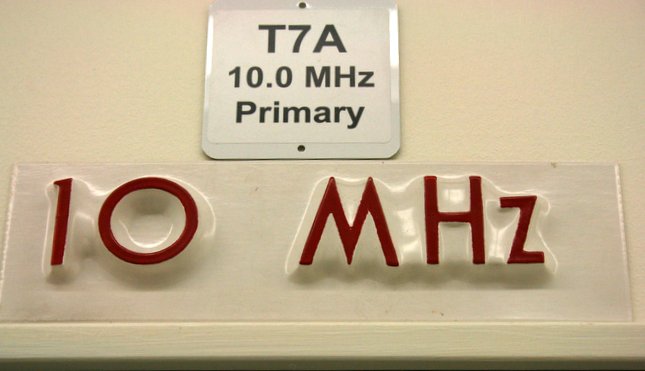
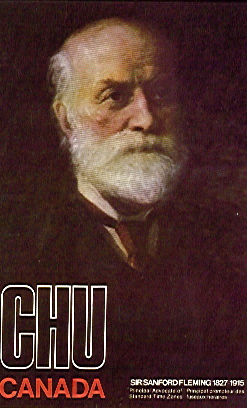
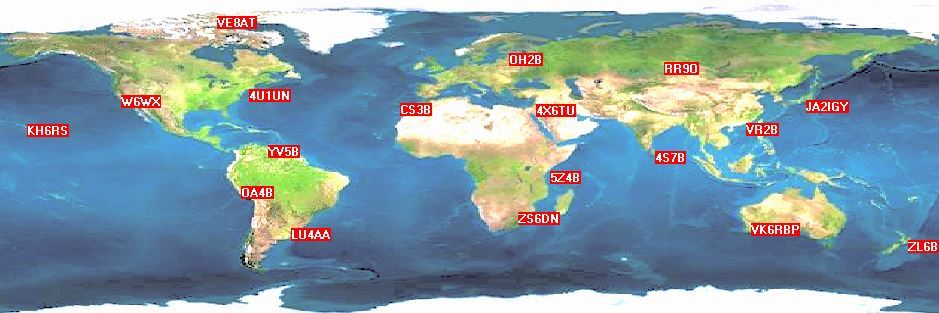
I think there’s also a 10 MHz time signal from Xi’an in China. I know i heard it int he UK on a portable once in 2015; not sure of anything more recent.
Connor,
Interesting!
Has anyone heard this more recently?
Cheers, Jock
In the Navy during Korea. It was my job to use WWVH and Australia to set the ships chronometer and assist in sextant navigation. Still listen to WWV .
Billy,
That’s way cool!
Thanks for your comments.
Cheers, Jock
Hello Jock, I’m an Electronic Communications Engineer of some 50 years, I’ve been a Ham for some 57 years and An SWL for for 63 years and WWV as well as WWVH for virtually all my life! These stations as well as some now defunct have always been a valued resource for many uses. The first time I recall was with a relative listening for Sputnik when I was but a child. Next it amazed me that I heard WWV with a modified Crystal Radio I had built. I cannot count the times I’ve used it as a signal source to align receivers and calibrate transmitters. I own an Antenna company so needless to say these time and standard broadcasts aid me there also.
Laurin WB4IVG
Wow, Laurin, that is so cool . . . a ham for 57 years and an SWL for 63 years.
And, obviously, I agree — WWV and WWVH are superb resources for SWLs and hams.
Thanks for your comments.
Cheers, Jock
Great article Jock. Thanks for sharing it. I skippered commercial
fishing boats in the days before GPS. We used NDBs a lot when doing coastal fishing. The Farallon Island (27 miles off San Francisco) NDB on 318 KHz was powerful and used a lot by aircraft and ocean vessels. When fishing mid Pacific for tuna I used a sextant since we were often beyond LORAN range. WWV provided the critical time signals used to calibrate my watch. Couldn’t get an accurate sun or star fix unless you had accurate time. Now retired and got my ham license. I have my own HF beacon of sorts: WSPR transmitter that steps through all the HF ham bands. It’s only 200 milliwatts into a simple dipole. I live in California but my beacon is heard nearly every day in Antarctica, Australia, Western EU, etc.
73,
Mark Meltzer
AF6IM
http://www.parachutemobile.com
Mark,
Thanks for the kind words.
And thanks for sending me on a “voyage of imagination” with your mention of sextant navigation and the NDB beacons.
What are the frequencies that your beacon steps through? I would like to see if I can hear it.
Cheers, Jock
Jock, try https://www.wsprnet.org/drupal/wsprnet/map
Put in my callsign AF6IM and you’ll see a map with my contacts on it. My xmtr steps through all ham bands 80M to
10M on dedicated WSPR “channels”. I use a Zack Tek xmtr. They cost less than $150 including a GPS puck. Highly recommended.
You might enjoy reading this. https://sites.google.com/site/boeing377/fishingamontereyclipperoutofsfsfisherman
73
Mark
Mark,
Wow, thanks!
Cheers, Jock
In the Summer of 1960 I was introduced to WWV and CHU by my uncle Ken (W1BTA). As a 12 year-old budding broadcaster, I was fascinated by the stations and their product. 62 years later they’re still as fascinating as ever although I’ve gotten virtual tours of WWV and WWVH and CHU much to my delight. Today I have my uncle’s W1BTA legacy calls-and am still fascinated by the technology used at all 3 operations. Thanks for this article, Jock.
Dave,
Thanks for the kind words and your comments.
You’re right: the WWV and CHU operations ARE fascinating . . . as are the beacons for me.
I guessing my inner “radio nerd” is showing!
Cheers, Jock
I have been checking WWV stations for years, and always my first “go-to” station when checking out a new radio because they are always on, at least one of the time frequencies can be heard any time of day.
For those folks with SDR radios, the program SDR Console has a multi display feature showing different bits of bands, and one of the presets is to show all of the WWV, RWM, and CHU signals as clickable displays, so you can quickly test what bands are open anytime of day. Cheers!
Robert,
I did not know that about SDR Console; that’s good information. (I haven’t allowed the SDR bug to bit me . . . yet. For now, I remain a knobs and buttons guy.)
Like you. WWV (and CHU on 3330) are my go-to references when checking out new gear or tweaks to the listening post here.
Cheers, Jock
Thank you for the reminder of international time stations. Indeed they are ver yuseful to study propagation 🙂
RWM (9996 khz) has always been very prominent throughout the day in Central Europe, and at night on 4996 khz.
Additionally, there is the (relatively weak?) one from Italy on 10 Mhz from Italcable, playing music and giving the time (male voice). I find this one a rare catch. It is probably inactive, short-wave.info/index.php?freq=10000 does not list it. Good article on Wikipedia en.wikipedia.org/wiki/JN53DV lists it as active though.
Frank,
Thanks for the kind words and the confirmation on RWM (now I have a callsign for the Russian time station) and the additional frequency.
Cheers, Jock
You are very welcome 🙂
I am just sitting out on the porch (Sunday 1 PM) and can confirm the Italian one as being active. My Degen 1103 receives it clearly (Italian instrumental music, digi beeps and Italian male voice that both count out the time). In narrow setting on 10001 KHz, RWM’s louder pulse beeps can be eliminated. The current instrumental song BTW is by Herp Alpert 😉
Frank,
Thanks for the update . . . and the trip down memory lane . . . I had not thought of Herb Alpert in years . . . now he’s playing in my head!
Cheers, Jock
Insignificant edit : Italcable time signal station’s obviously most favorite song is “Hello Muddah, Hello Fuddah”, instrumental, and not by Herb Alpert but by Allen Sherman.
When you listen to Italcable for a longer time, you can’t help but whistling along…
Thank you for the reminder of international time stations. Indeed they are very useful to study propagation 🙂
RWM (9996 khz) has always been very prominent throughout the day in Central Europe, and at night on 4996 khz.
Additionally, there is the (relatively weak?) one from Italy on 10 Mhz from Italcable, playing music and giving the time (male voice). I find this one a rare catch. It is probably inactive, https://www.short-wave.info/index.php?freq=10000 does not list it. Good article on Wikipedia https://en.wikipedia.org/wiki/JN53DV lists it as active though.